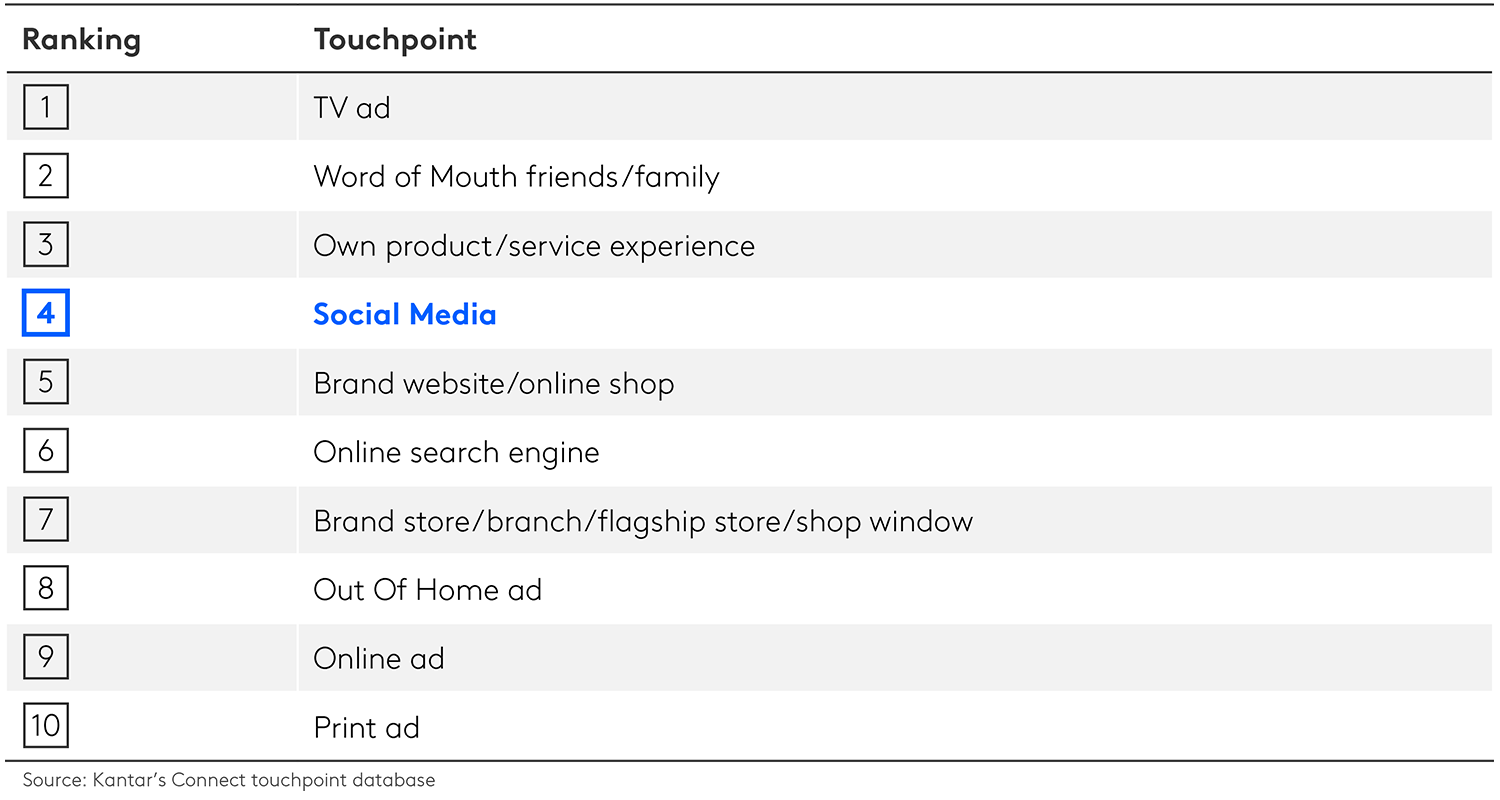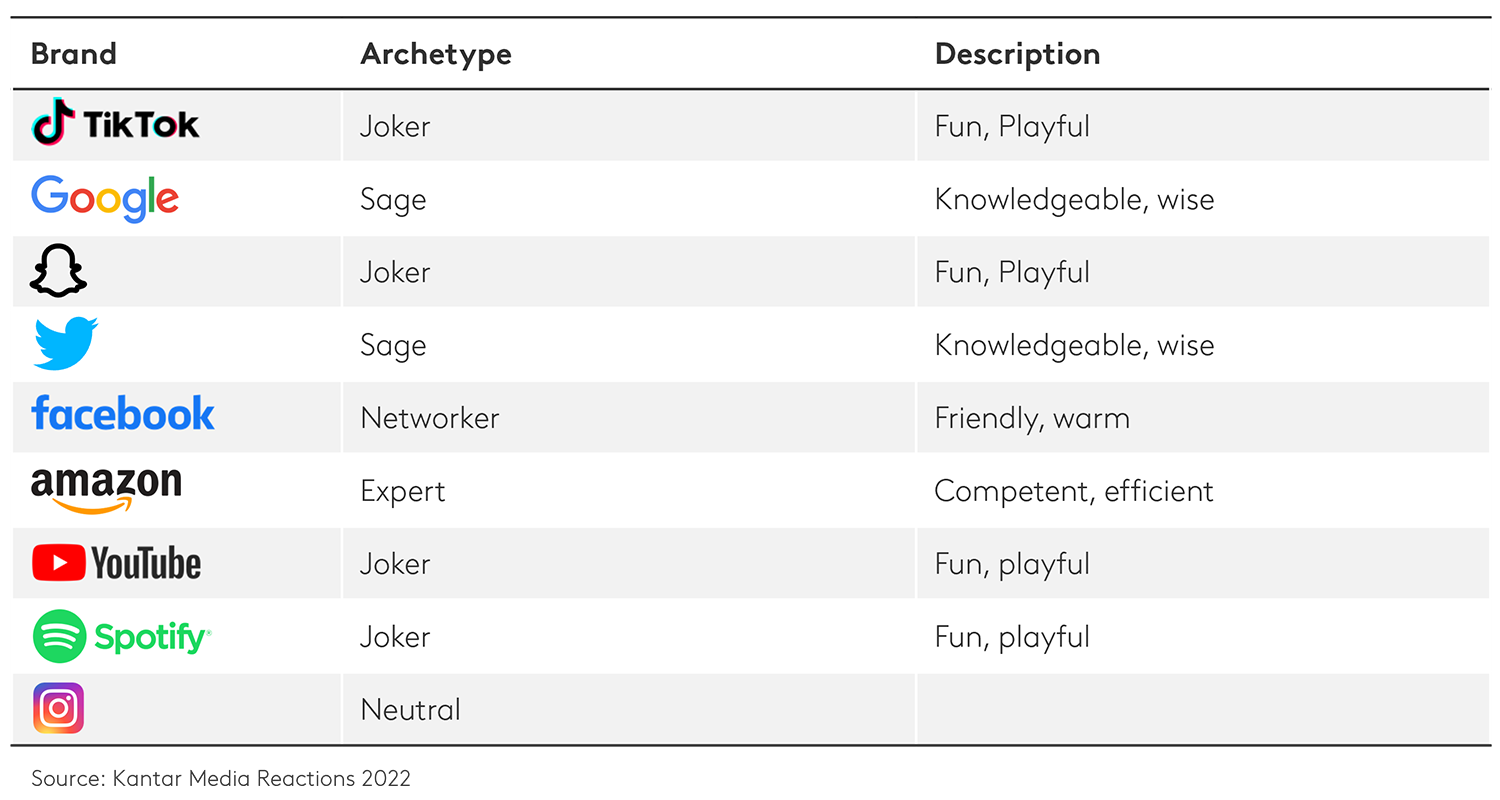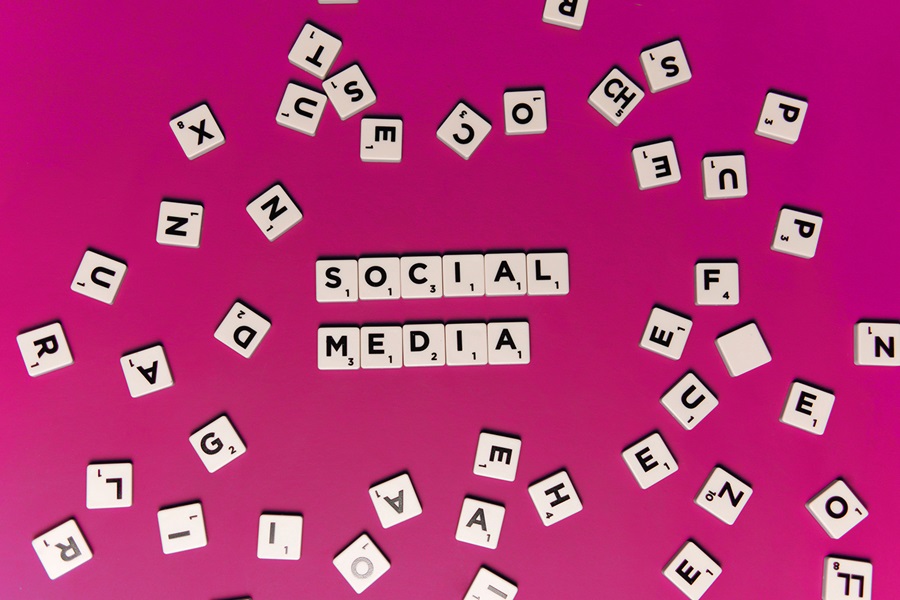According to Kantar’s Connect database, 20% of brand touchpoints account for about 80% of the brand impact. So, selecting the right touchpoints and allocating budget accordingly is essential. Our annual Power of Connections research mines Kantar’s creative and media databases to understand the evolving media landscape. You can download the guide below, but for now, let’s focus on social media, a rapidly growing channel.
Since social media entered the advertising arena over 20 years ago, the marketing ecosystem has undergone massive disruption and accelerated change – and its impact is showing no sign of slowing down. Kantar’s CrossMedia database quantifies what many of us know intuitively, that social media is an essential part of media plans; it’s the fourth most impactful touchpoint overall and the first among online touchpoints.
Touchpoint impact ranking
 And according to Kantar’s annual Media Reactions study, in 2023 a significant number of marketers are planning to increase spend on social media channels, with social media stories (+57%), influencer content (+56%) and social news feed ads (+52%) benefitting the most.
And according to Kantar’s annual Media Reactions study, in 2023 a significant number of marketers are planning to increase spend on social media channels, with social media stories (+57%), influencer content (+56%) and social news feed ads (+52%) benefitting the most.
From the metaverse to new consumer behaviours, the digital transformation that social has ushered in presents limitless opportunities for marketers, though of course it also comes with some challenges.
Our experience shows that marketers should focus on three key dynamics to navigate this space.
1. Tell a story fit for context
It’s important for advertisers to tailor their delivery to the platform in question, something consumers expect advertisers to do. There are a few tried and true lessons in terms of what works where.
Humour is an important creative tool – but it’s use has been declining, and it is predominantly used in TV. Social media is a great place to use humour in your advertising as funny content is often widely shared, but it is important that the humour is suited to the platform it appears on. TikTok and YouTube are both considered to be playful brands in the US, which may in part explain why the humorous style works particularly well on these platforms.
Brand personality

For video formats, make sure the brand is well integrated from the beginning with a clear role, and use vertical videos, less text on images, and clear calls to action. For video formats that don’t have audio automatically enabled, ensure that messaging and brand information is communicated without reliance on audio.
The key thing to understand is how to create a story that translates in each medium and connects to the broader brand strategy, especially if you are creating a multi-platform campaign with different story lengths. Longer ads have great storytelling potential, but they need to be highly engaging to hold the attention of viewers. Shorter form content needs to create ‘love at first sight’ with clear hooks, visual quality, and an enjoyable experience.
2. Understand your media mix
When considering your media plan, it’s critical that you have clear objectives in terms of what impact, effect, result and audience you are looking to have so that you can choose the right platforms. Some social platforms are better at creating emotional connections whereas others are better at facilitating one-click purchase journeys.
Social Media works well when a selection of the appropriate social channels is used as part of an integrated campaign. Because it’s so good at reaching specific audiences, when it is leveraged as a part of a campaign built around platforms like TV, it can create a stronger return on investment for the overall effort.
Brands need to look beyond the message and medium and instead concentrate on the overall impact. Story and strategy should function as a unit. After all, it’s great to have a story, and it’s better to have it heard, but it’s best when it resonates with the right people at the right time and place.
3. Embrace new consumer journeys
Social media has created new ways of connecting consumers and brands, which in turn results in more fragmented audiences, a new attention economy era, and more consumer experimentation. New platforms seemingly pop up overnight and the ways in which people are engaging with social platforms are ever-changing.
Today, people use social media platforms to discover new products and brands - providing marketers with untapped opportunities to reach consumers at the ‘point of inspiration’. Brands can now sell directly through many social platforms and thereby condense the path to purchase while also improving the measurability of a sale. Community experiences in new forms are also emerging quickly. Audiences can now experience live shopping on numerous platforms. The growth in social commerce is a notable trend, facilitated by social media platforms emulating Amazon’s ‘one click, next day delivery’ capabilities.
But what does the future hold? Our research shows that 61% of online consumers are likely to purchase from social sites. This figure has room to grow as the market matures. There will be more opportunities for consumers to engage with digital commerce, especially as new technologies like Virtual Reality (VR) and Augmented Reality (AR) continue to mature. Research also finds that by 2023, 71 million people are expected to use VR every month which could make the metaverse a valuable digital channel.
Conclusion
While the lines between offline and online continue to blur and as marketers continue to invest in social media, a well-known expression comes to mind – ‘knowledge is power.’ Social media is unlike other channels in that it has its own world of platforms, each with unique advantages, characteristics, and behaviours. For marketers to get the most out of the opportunities social has to offer, it’s key to understand these nuances and how to leverage them within an integrated campaign.
Download Power of Connections, a free report that explores the evolving landscape of media touchpoints. Find more information about Social Media touchpoints as well as Audio, Video, Recommendations, Product, Commerce, Partnerships and Static. Discover how effective each media touchpoints is, take advantage of our recommendations for success and learn from our case studies to guide your media strategy.
Want more like this?
Read: Express your emotions: Why emotional response is important in advertising
Read: The 5 strategic sparks used by the world’s best advertisers
Read: To be effective, digital ads must work in context
Read: Who’s laughing now? Let’s stop the decline of humour in advertising
Read: Revealed: The top-ranking media channels and brands for 2022



